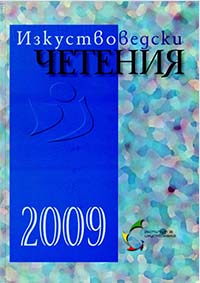Траки и перси, или за „международния ахеменидски стил" и металните съдове от Тракия в V и първата половина на IV в. пр.Хр.
The Thracians and-the Persians: Metal Vessels from the Fifth to the Fourth Centuries BC
Author(s): Rouslan StoichevSubject(s): Theatre, Dance, Performing Arts
Published by: Институт за изследване на изкуствата, Българска академия на науките
Summary/Abstract: Our knowledge of the Persian presence in the area of Southeast Europe inhabited by Thracian tribes is based on descriptions by the Greek historian Herodotus of the military campaigns led by Darius in 513 BC and Xerxes in 480 BC. In our efforts to explain the detail and order of events, as well the reasons and aims of the campaigns led by the Achaemenids, we inevitably turn our attention to these texts and sometimes we lose sight of the fact that according to the archaeological evidence, this period formed only a small part of a continuing East-West cultural dialogue. Of course, Herodotus will not be ignored in this paper, but a new view of the ideological proximity of the two cultures will be proposed based on a close analysis of certain metal vessel forms rather than textual evidence. According to this approach, war was a contributory rather than foundational factor to the propinquity between Persia and Thrace. The archaeological finds indicate the relatively early usage in Thrace of objects with clearly defined Near Eastern origins, a circumstance which some time ago attracted the scholarly attention of Prof. Venedikov. Unfortunately, despite the interesting nature of this subject, recently it appears to have been abandoned in favour of our efforts to explain the Thracian world by emphasising Hellenistic ways of thinking and behaviour founded on traditional ideas of prolonged direct contact between Greece and Thrace. If we are mercilessly realistic, however, we must take note of the fact that there exists a series of reasons which justify the presence of typical Persian elements in the Thracian context as early as from the end of the sixth century BC. The metal vessels discussed here (cups, phialae, jugs and amphorae) were discovered over a large geographical area (from Central Asia in the east to the Apennine Mountains and Sicily in the west). This fact has been used by several researchers as the basis for the term 'international Achaemenid style' when attempting to establish the routes of their dispersal, and to suggest the possibility that some of the vessels were produced in separate, geographically distant workshops, while still submitting to a single artistic influence. From a technical point of view, perhaps such a term is useful for describing nuances in style in the production of some local workshops. How- ever, when used regarding the meaning which the objects carried in communities both under and outside Achaemenid political control, the term lacks substance. If we accept the principle that the aesthetic values of a culture are both socially and ideologically formed, like any other aspect of society, the question then becomes: what made the different levels of Achaemenid art desirable in the eyes of some Thracians? And why did the Thracian aristocrats during a certain period demonstrate a strong interest towards certain goods of the Near Eastern type?
Journal: Изкуствоведски четения
- Issue Year: 2009
- Issue No: 5
- Page Range: 134-144
- Page Count: 11
- Language: Bulgarian
- Content File-PDF

